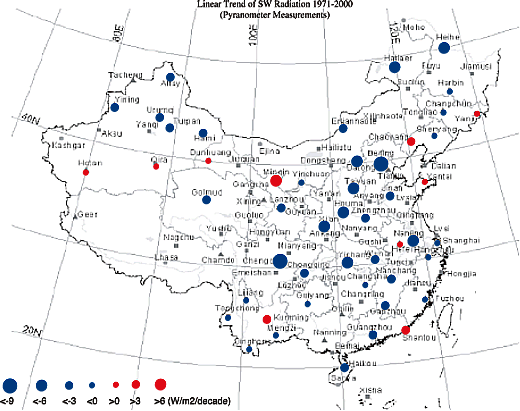Emissions of Greenhouse Gases and Aerosols, and Human Activities in East Asia
The recent growth of economy in East Asian region is being watched with keen interest. The relationship between human activities and emissions of greenhouse gases and aerosols in this region are studied with collaboration of socioeconomic analysts and atmospheric scientists. This research project consists of macro-analysis of economy, development of emission inventory, analysis of atmospheric transport by using model and satellite data, and ground-based observation around Japan and China.
The present study focused on the East Asia, especially China for the past few decades to investigate (1) relationship between the change in human activities such as economy and industry and the change in emissions of a anthropogenic gasses and aerosols, and (2) the influence of the emitted gases and aerosols on the climate change and air pollution.
The macroanalysis of economy was performed as planned. The economic development in the East Asian countries led by the industrialization brought increases in energy consumption and emissions of CO2, SO2 and others. However, SO2 emission has not increased so much as expected. The emission density of CO2 has not increased or has decreased due to an improvement of energy efficiency.
The emission inventory was developed according to the initial plan, which includes anthropogenic greenhouse gases, aerosols, and precursors of aerosols for the period, 1980-2003. Figure 1, for example, shows the changes in the amount of the emission of SO2, NOx, and Black carbon (BC) in Asia.
The analysis of emitted anthropogenic gases and aerosols was performed with observations and atmospheric transport models. The observations of greenhouse gases were carried out in China and around Japan. The observations of aerosols were carried out mainly in Japan. The results of those observations were consistent with the emission inventory.
As a result, aerosol loading increased with an increase in fossil fuel consumption in China and other Asian countries and air pollution increased, and thus surface shortwave irradiance decreased. However, the surface air temperature increased in almost all regions of China for the past 40 years, because of increasing greenhouse gases and complicated climate system.
 |
| Figure 1 Linear trend of surface shortwave irradiance observed in China for 1971-2000. |

